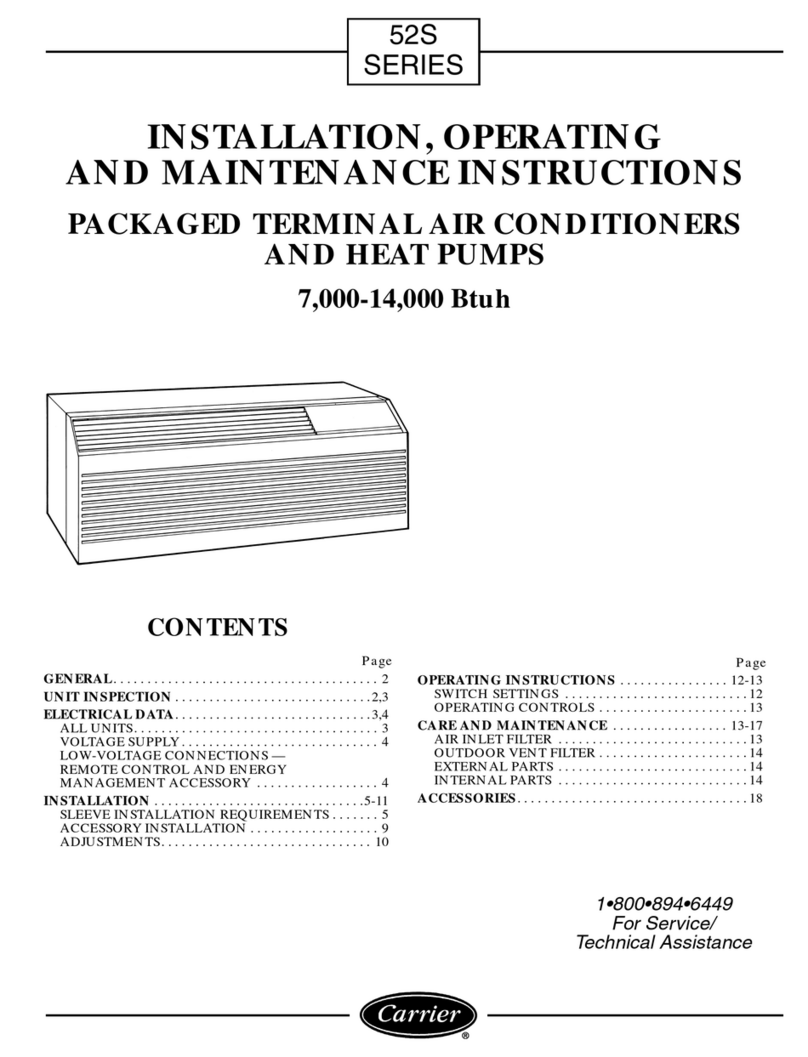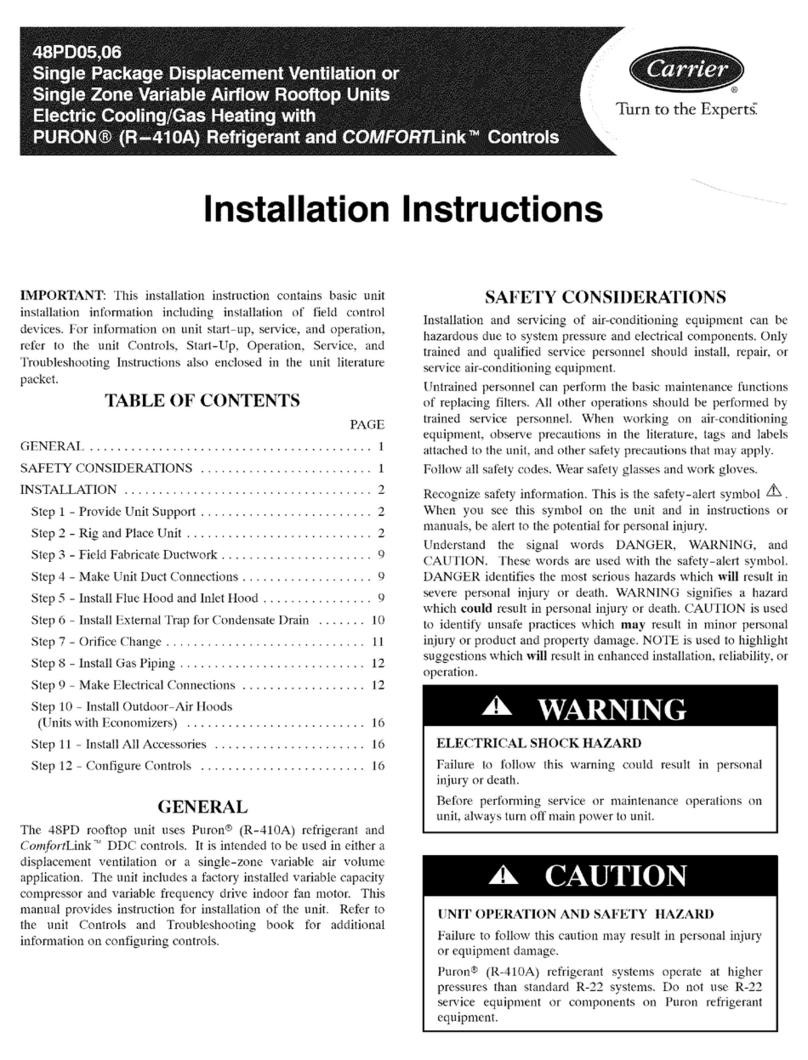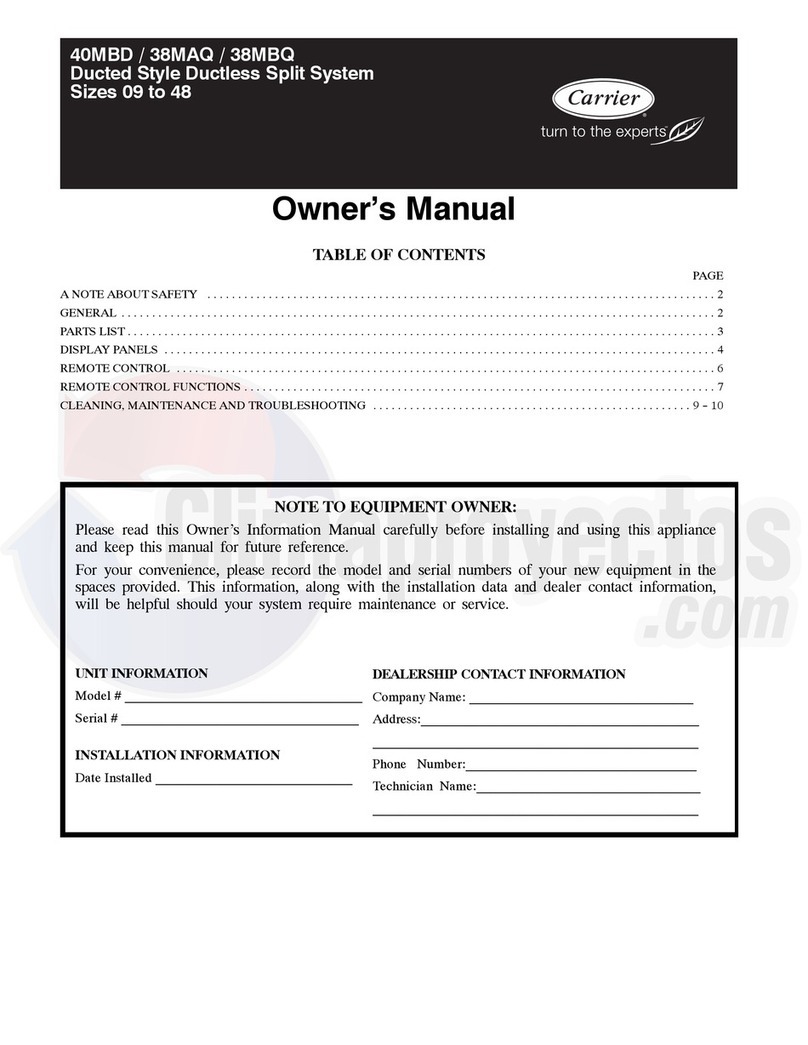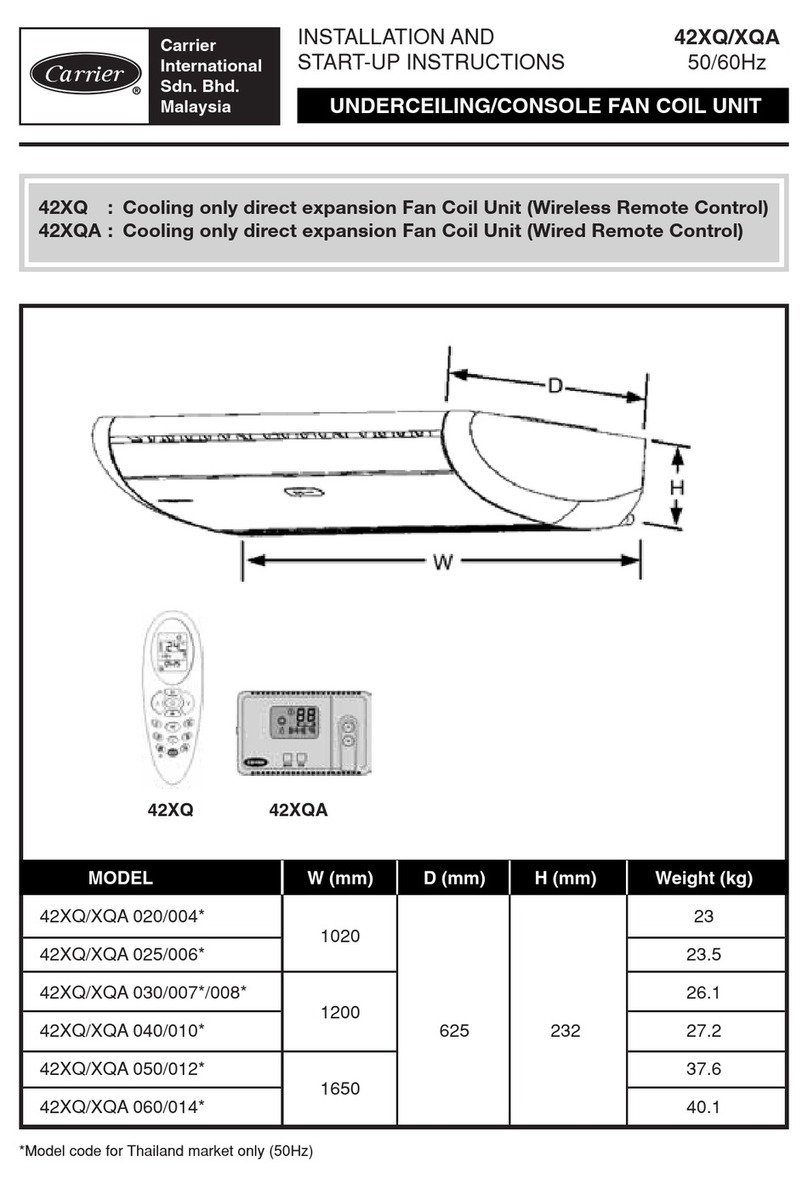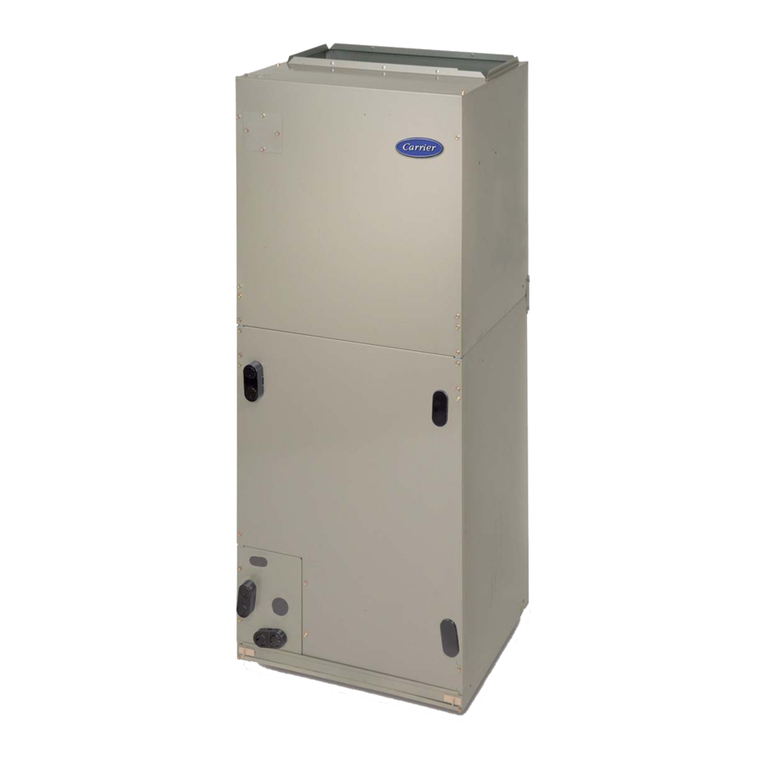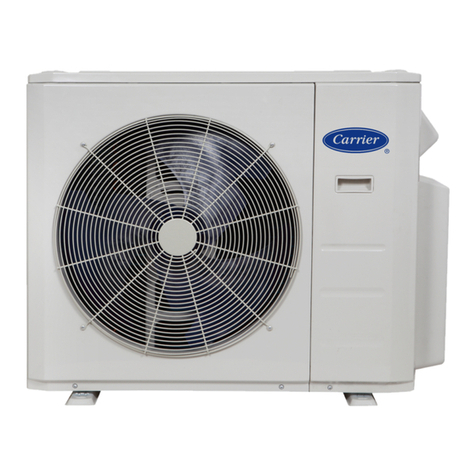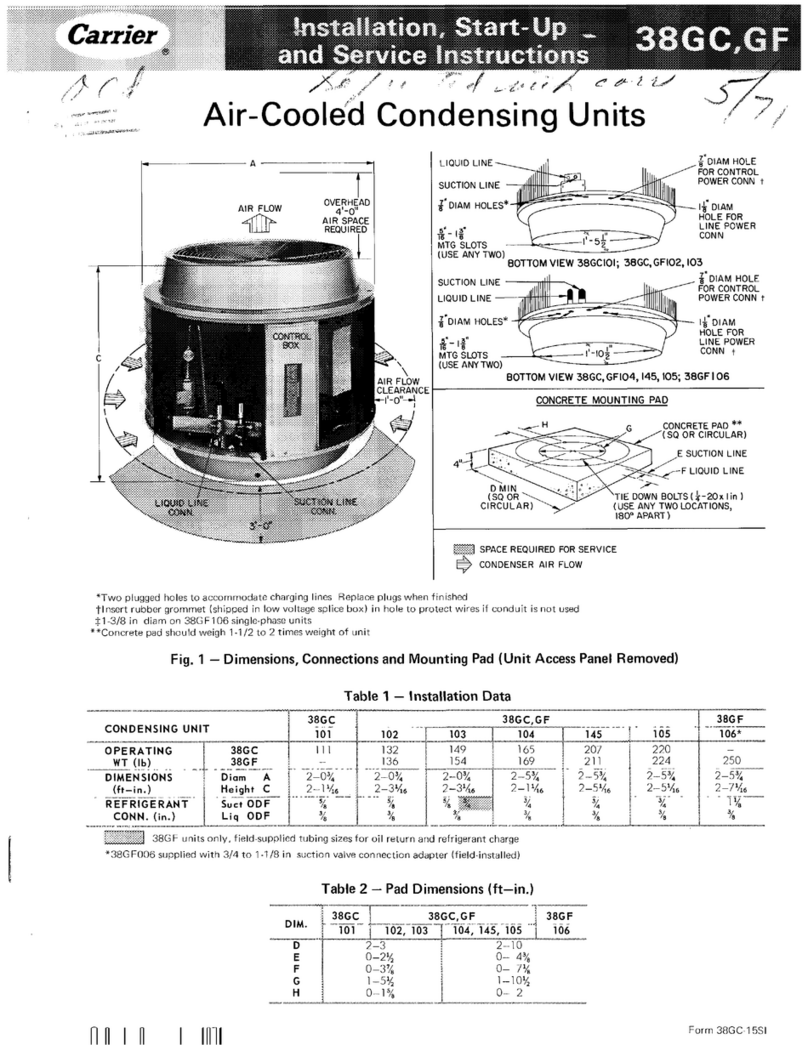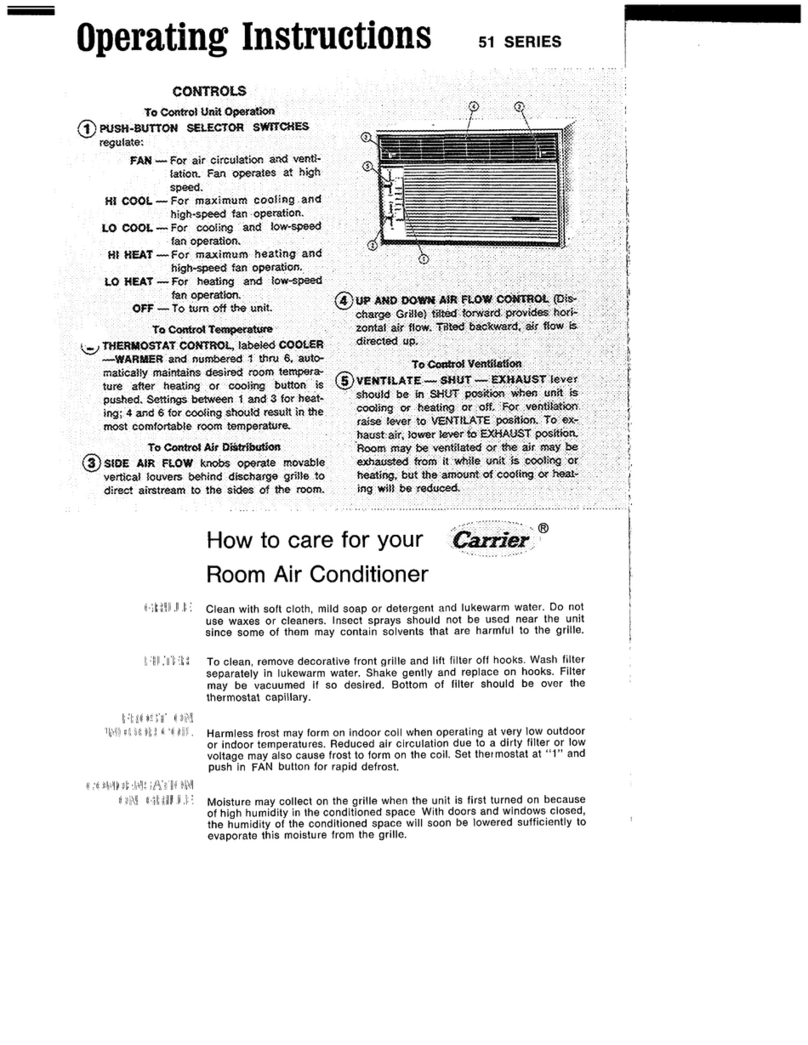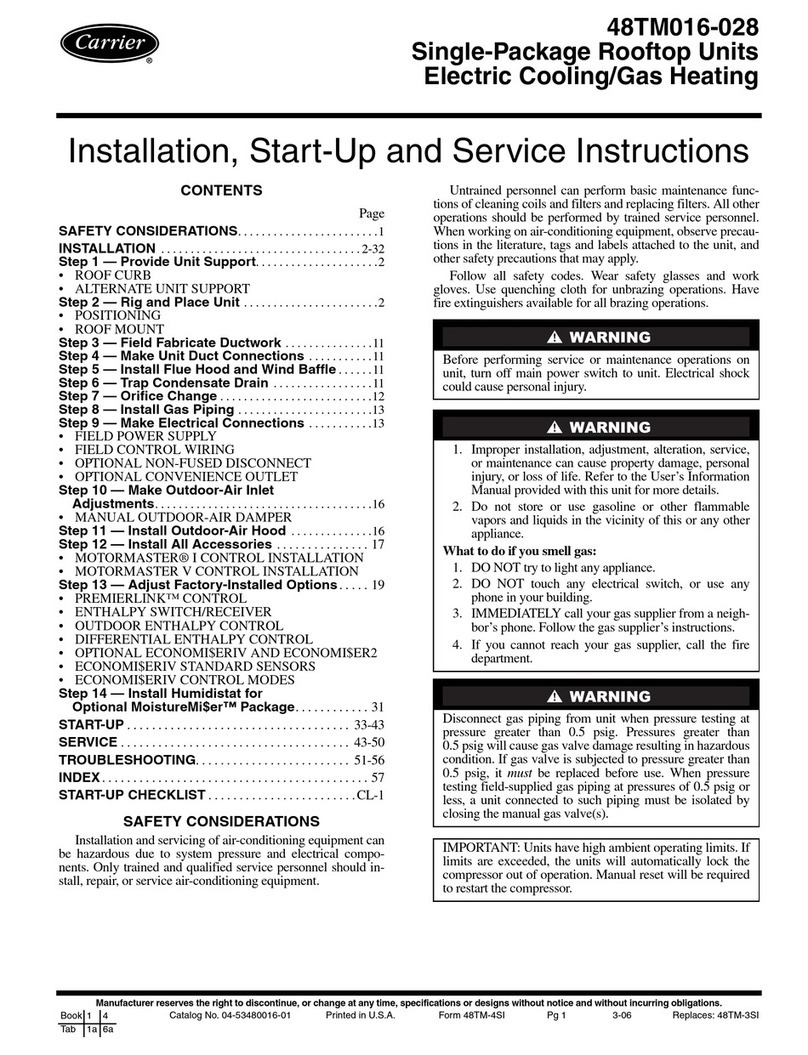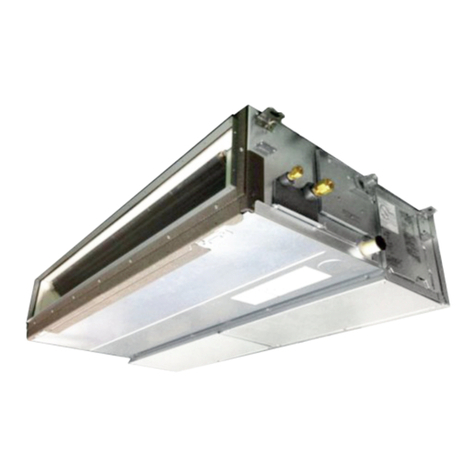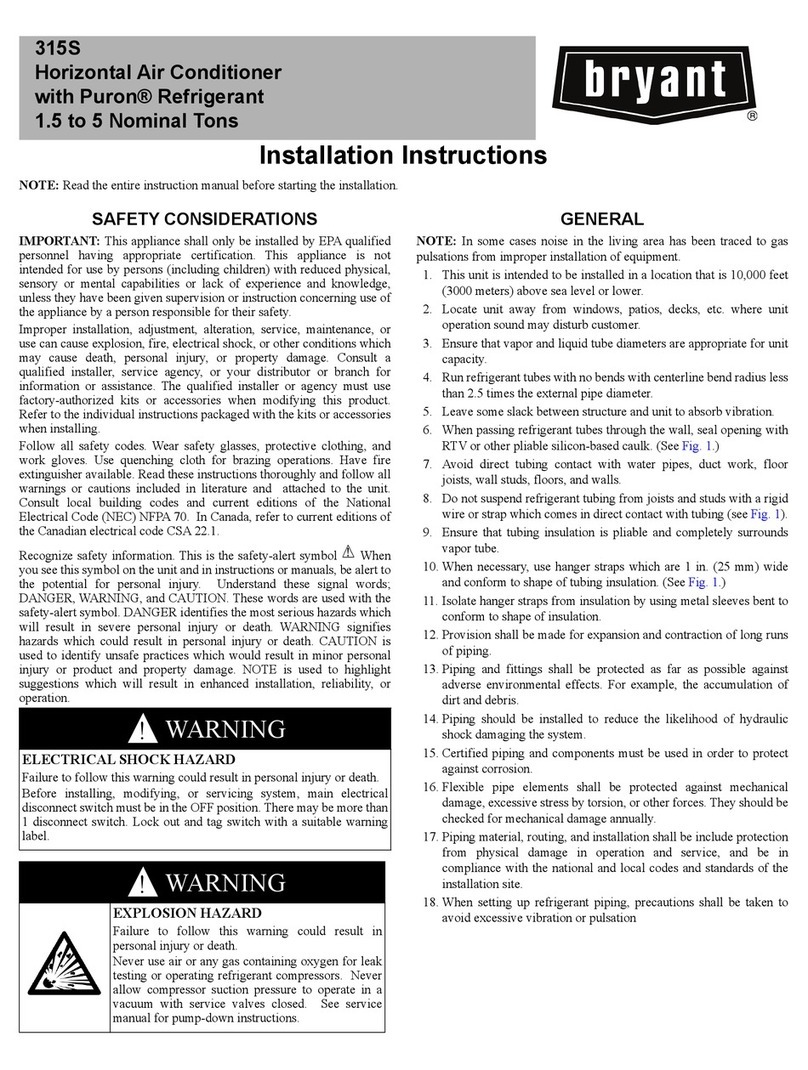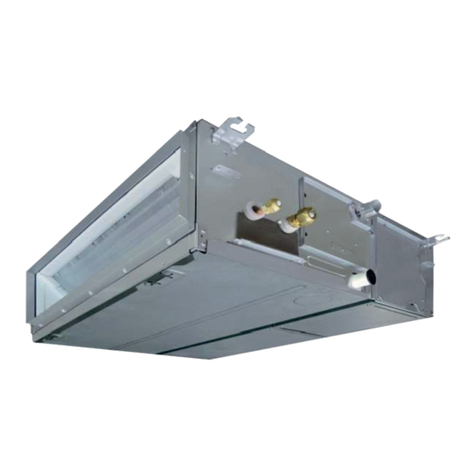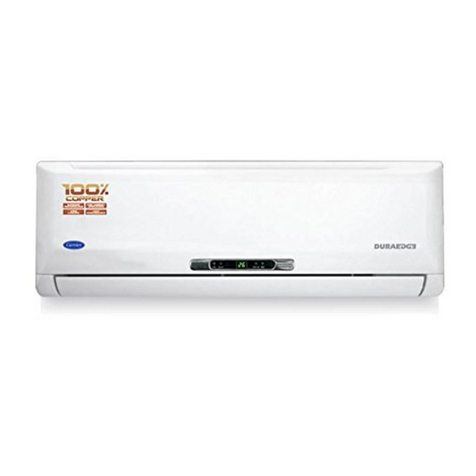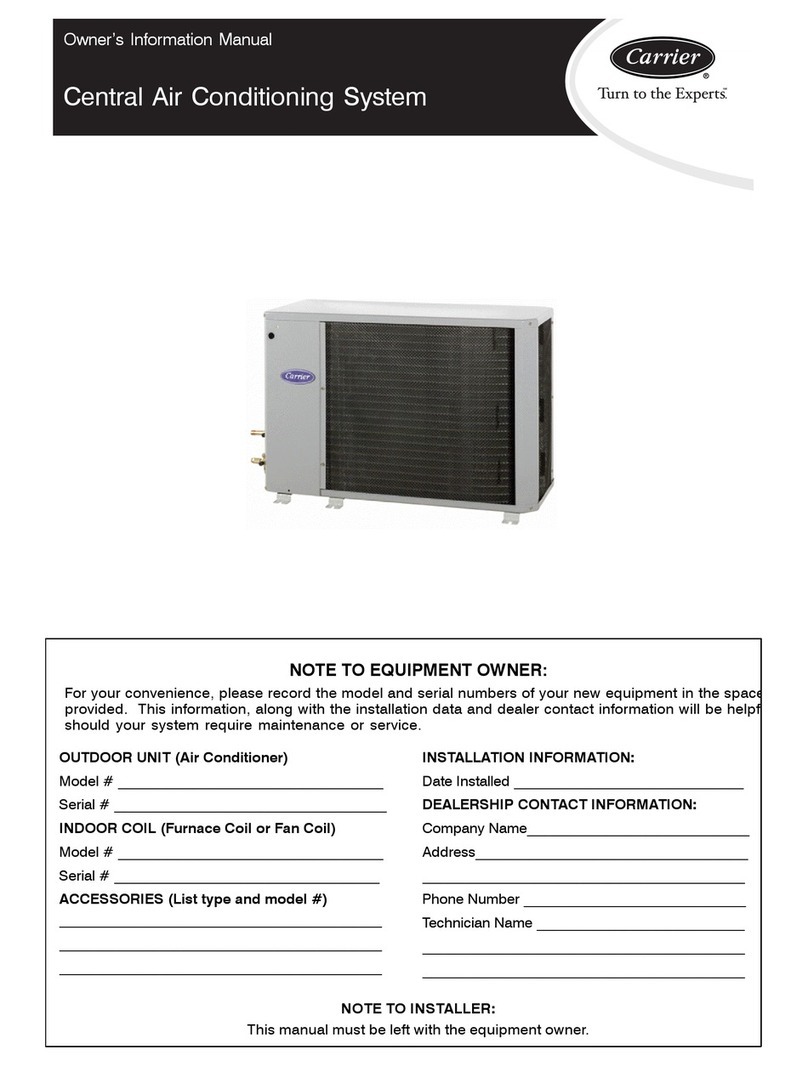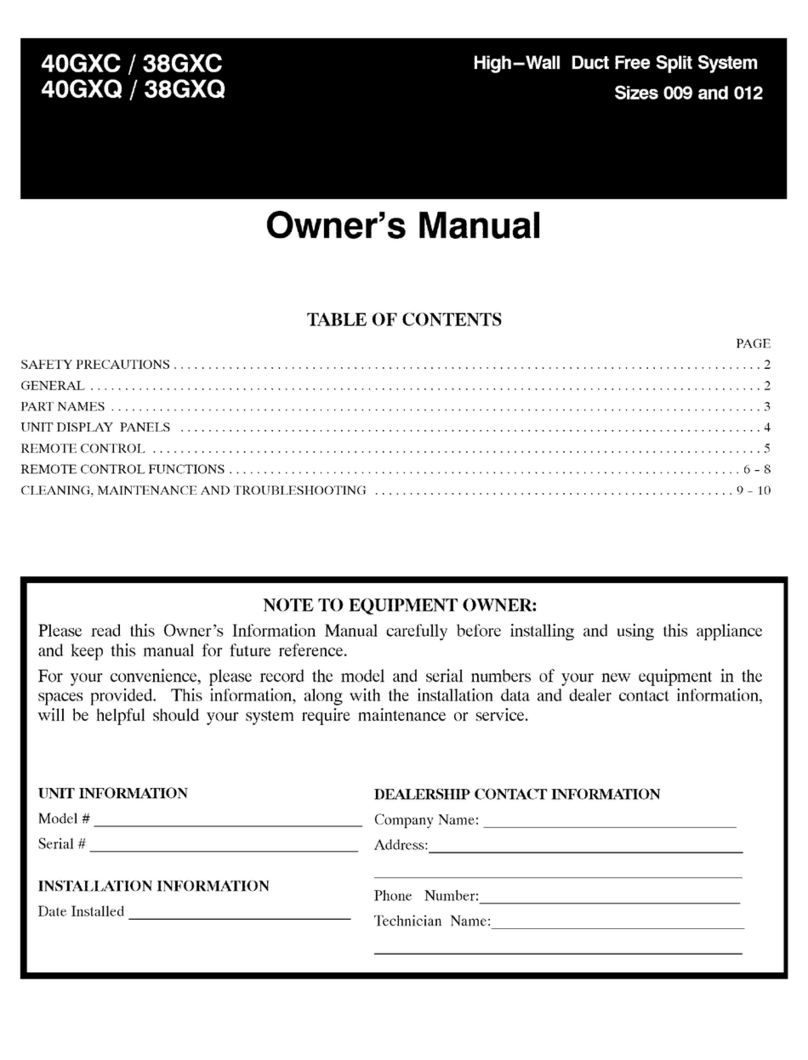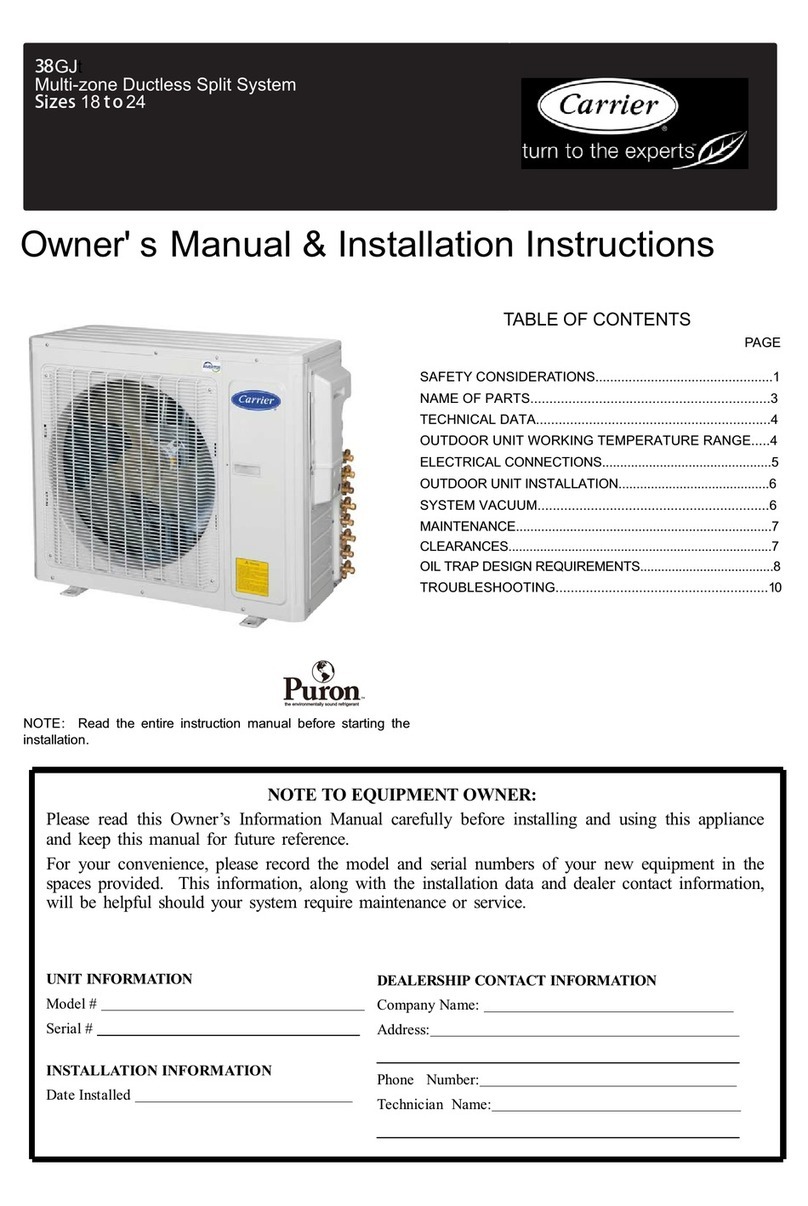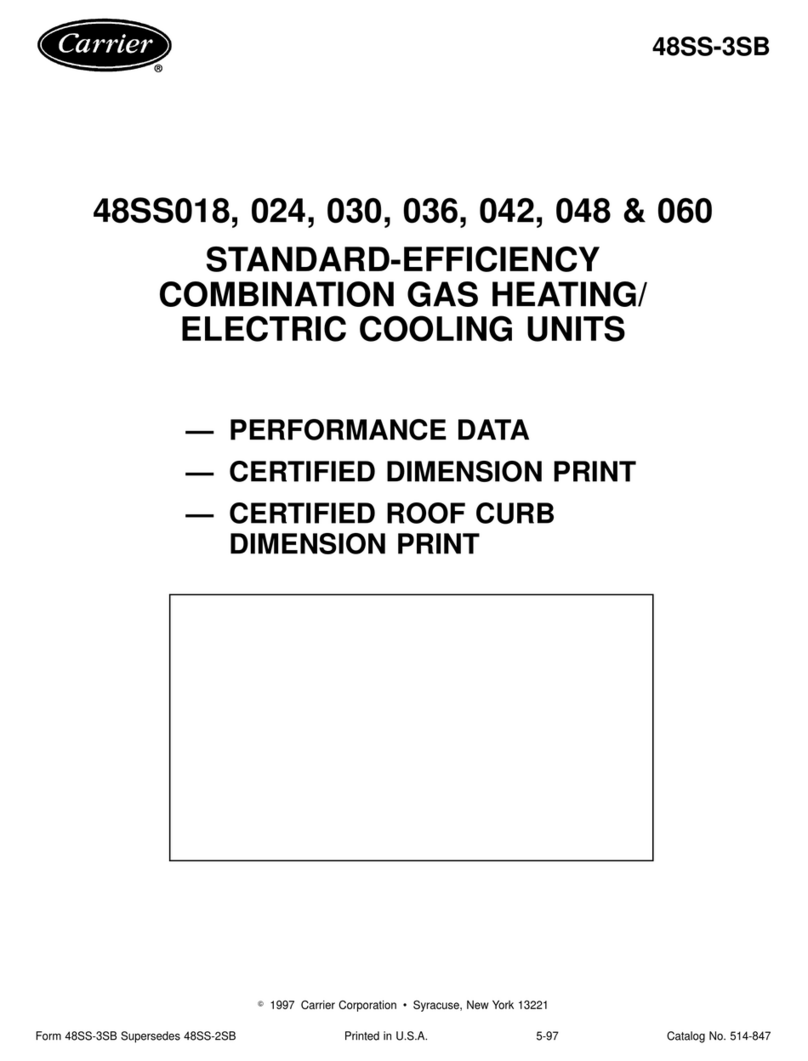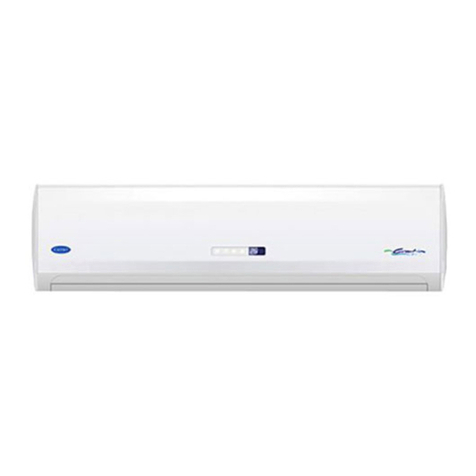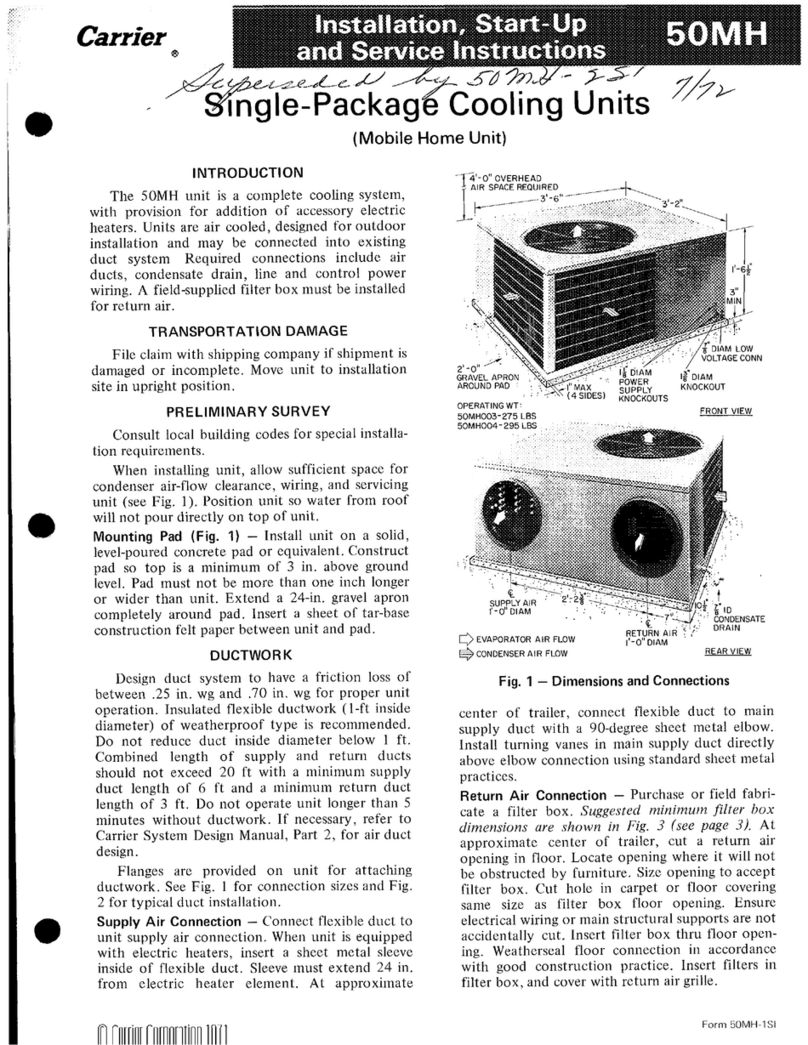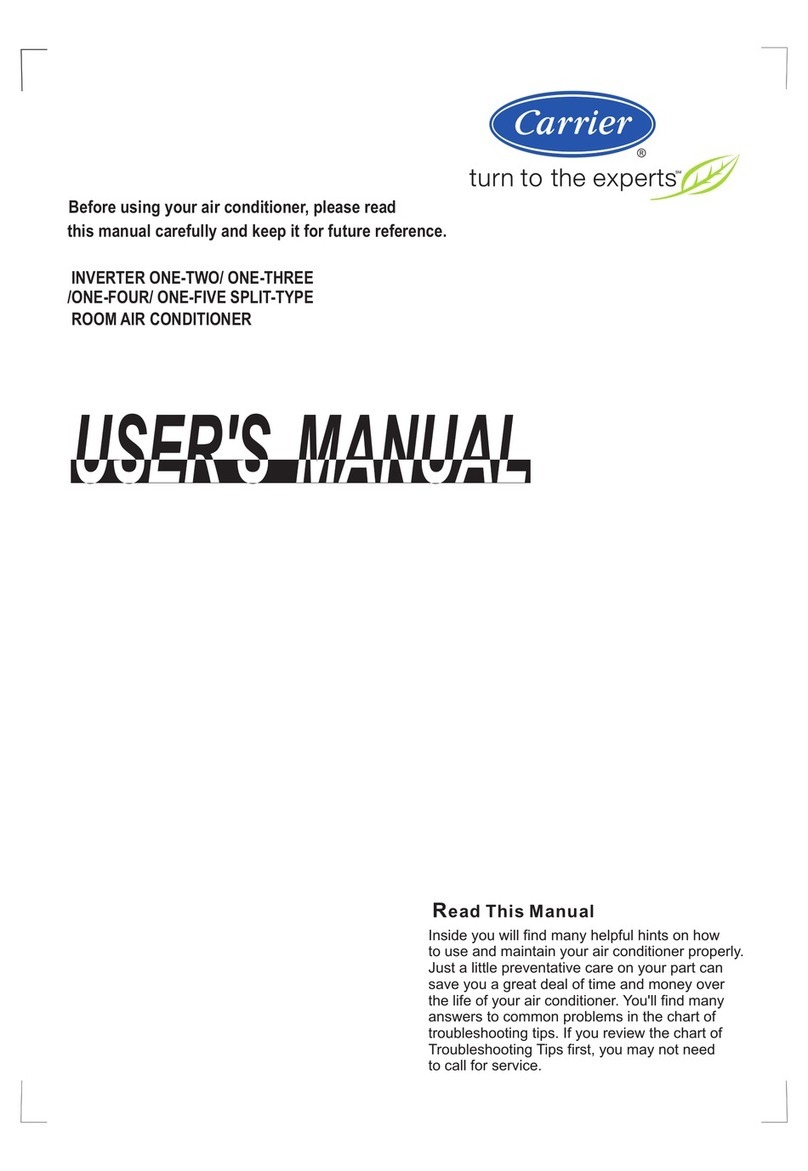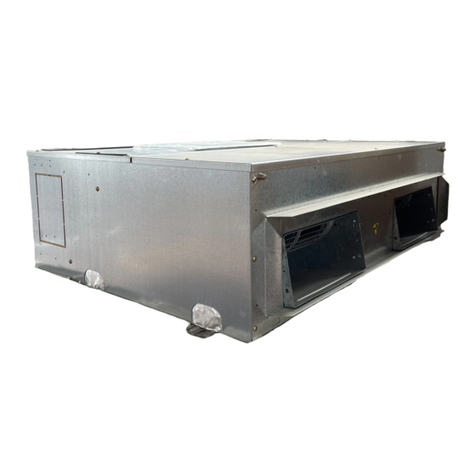
10
Fire Shutdown
When Fire Shutdown or Smoke Detector sensors are
field--installed, the unit must be configured for it by setting
SETTINGS UNIT CONFIGURATIONS SWITCH INPUTS
CONFIGS FIRE SHUTDOWN SW to normally open (0) or
normally closed (1).
Outdoor Enthalpy
When an Outdoor Enthalpy sensor is field--installed, the unit must
be configured for it by setting SETTINGS UNIT
CONFIGURATIONS ANALOG INPUTS CONFIGS OARH
SENSOR CHAN to the channel number the sensor was wired into.
IAQ Sensor
When a CO2sensor is field--installed, the unit must be
configured for it by setting SETTINGS UNIT
CONFIGURATIONS ANALOG INPUT CONFIGS IAQ
SENSOR CHAN selects the unit response to this input. Default
conversion to 0 to 2000 ppm.
OAQ Sensor
When an Outdoor Air Quality sensor is field--installed, the unit
must be configured for it by setting SETTINGS UNIT
CONFIGURATIONS ANALOG INPUT CONFIGS OAQ
SENSOR CHAN. Default conversion to 0 to 2000 ppm.
Filter Status
When a Filter Status Switch is field--installed, the unit must be
configured by setting the input channel it is wired to and normal state.
SETTINGSUNIT CONFIGURATIONSSWITCH INPUT
CONFIGSFILTER SW CHANNEL and FILTER SW TYPE.
Phase Monitor
When a phase monitor is field--installed, the unit must be
configured by setting the input channel it is wired to and normal
state SETTINGUNIT CONFIGURATIONSSWITCH INPUTS
CONFIGSPHASE MON CHANNEL and PHASE MON SW
TYPE.
Two Position Damper
When a Two Position damper is field--installed, the unit must be
configured by setting the output channel it is wired to.
SETTINGS UNIT CONFIGURATION GENERAL 2POS/
ERV CHANNEL.
Programming Operating Schedules
When the building automation system you have the SystemVut
controller configured for (BAS Protocol Select) is None (0) or
CCN (1) the SystemVu controller can follow a standard CCN
occupancy table. The occupancy can be modified from any CCN
tool or from the local display.
OCCUPANCY SCHEDULE — For flexibility of scheduling, the
occupancy programming is broken into eight separate periods. For
each period the schedule contains the following fields: Day of
Week, Occupied From, and Occupied To.
DAY OF WEEK — The day of week configuration consists of
eight fields corresponding to the seven days of the week and a
holiday field in the following order: Monday, Tuesday,
Wednesday, Thursday, Friday, Saturday, Sunday, and Holiday. If a
1 is configured in the corresponding place for a certain day of the
week, the related “Occupied from” and “Occupied to” times for
that period will take effect on that day of the week. If a 1 is placed
in the holiday field, the related times will take effect on a day
configured as a holiday. A zero means the schedule period will not
apply to that day.
Day of week: Range 0 or 1
Default Values 0 for all of the periods.
OCCUPIED FROM — This field is used to configure the hour and
minute, in 24 hour clock, that the mode for the controller will
switchtooccupied.
Occupied From: Units Hours:Minutes
Range 00:00 to 24:00
(Minutes 00 to 59)
Default Value 00:00
OCCUPIED TO — This field is used to configure the hour and
minute, in 24 hour clock, that the mode for the controller switches
from occupied to unoccupied.
Occupied To: Units Hours:Minutes
Range 00:00 to 24:00
(Minutes 00 to 59)
Default Value 00:00
When the building automation system configured to (BAS
PROTOCOL) is BACnet, the occupancy and holiday information
will be reset to defaults in preparation for receiving a BACnet
occupancy object. While participating on a BACnet network these
configurations cannot be changed at the local interface or with
CCN tools. All scheduling is done from the BACnet interface
designated to provide schedules.
SERVICE TEST
The Service Test function can be used to verify proper operation of
compressors, heating stages, indoor fan, outdoor fans,
Humidi--MiZerRsystem operation, power exhaust fans, economizer,
crankcase heaters, and the alarm relay. Use of Service Test is
recommended at initial system start up and during troubleshooting.
(See Table 4 for point details)
Service Test mode has the following changes from normal operation:
SOutdoor air temperature limits for cooling circuits, economizer,
and heating are ignored.
SNormal compressor time guards and other staging delays are
reduced to one minute or less.
SCircuit strike out time is reduced to 1 minute instead of 15 minutes.
SIt may take up to 30 seconds to actually enter test mode after
activating the command.
Press the TEST button on the SystemVutinterface anytime to
access the Test menu. Service Test mode can only be turned
ON/OFF at the unit display. Once turned ON, other entries may be
made with the display or through CCN. To turn Service Test mode
on, change the value of TEST MODE to ON. To turn service test
mode off, change the value of TEST MODE to OFF. Service Test
mode will be automatically turned off based on keypad inactivity
and the Service Mode Test Time out (TEST MODE TIMEOUT).
NOTE: Service Test mode may be password protected. Refer to
Basic Control Usage section for more information. Depending on
the unit model, factory--installed options, and field--installed
accessories, some of the Service Test functions may not apply.
Independent Outputs
The INDEPENDENTS submenu is used to change output status
for the economizer, Humidi--MiZer system valves, power exhaust
stages, crankcase heaters, the alarm relay, as well as perform a
compressor bump test. These independent outputs can operate
simultaneously with other Service Test modes. All outputs return to
normal operation when Service Test is turned off. The compressor
bump tests cannot be run while running cooling tests and will
automatically turn off after one minute.
Fan Test
The FAN TESTS submenu is used to setup or test speeds for the
indoor fan. Use the IDF SPEED TEST point to control the indoor
fan speed in terms of %, and use the CONVERTED IDF RPM
point as feedback to help set the fan speed settings in terms of
RPM. The indoor fan transition type point inform the test routine
how to handle the fans while running the cooling or heating tests.
Automatic will automatically transition the fans as the cooling or
heating tests change. While the Manual transition will only run the
fans as set by the test points.
